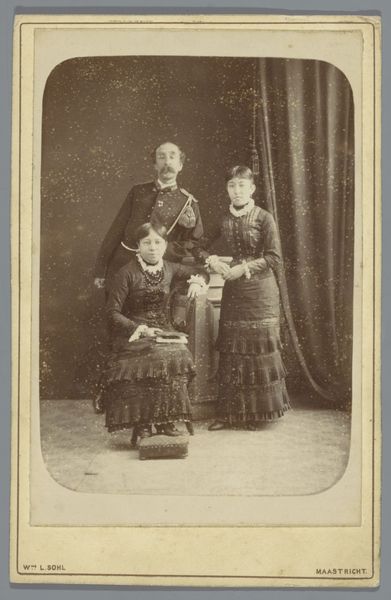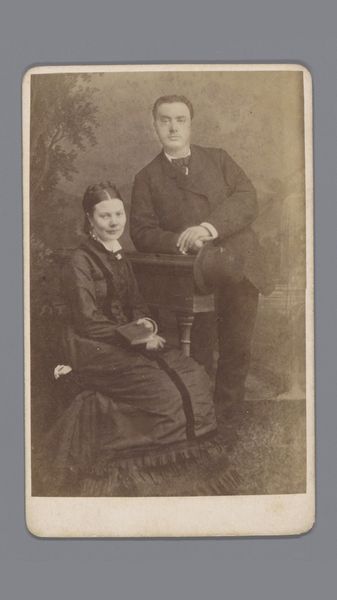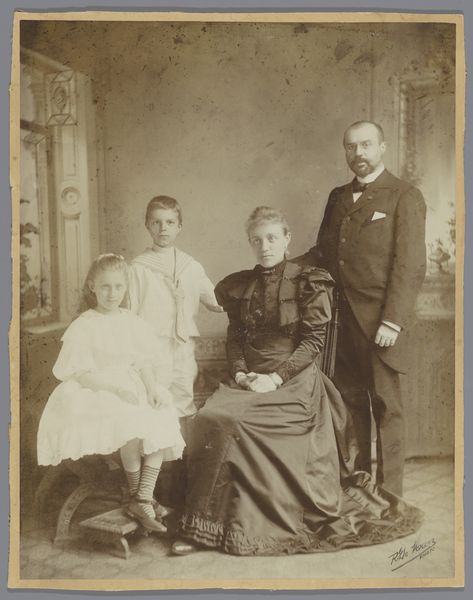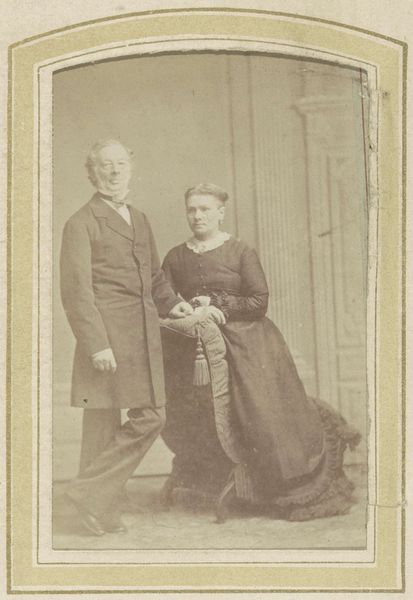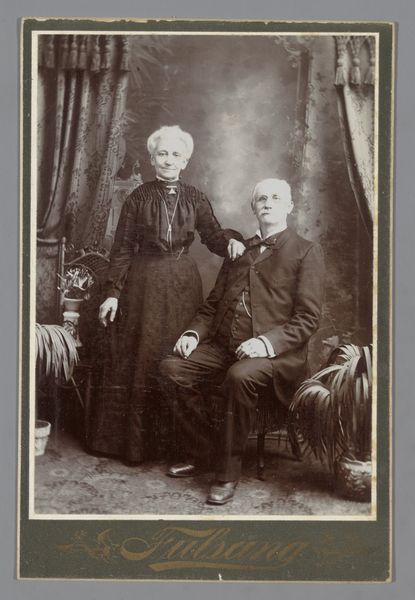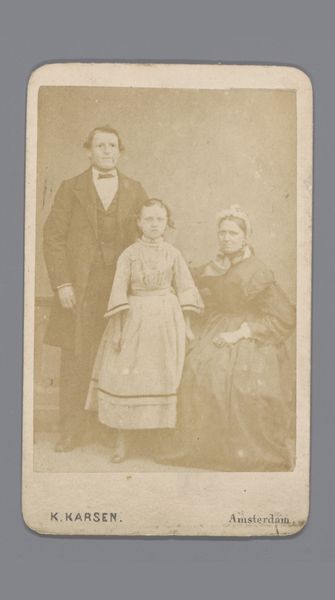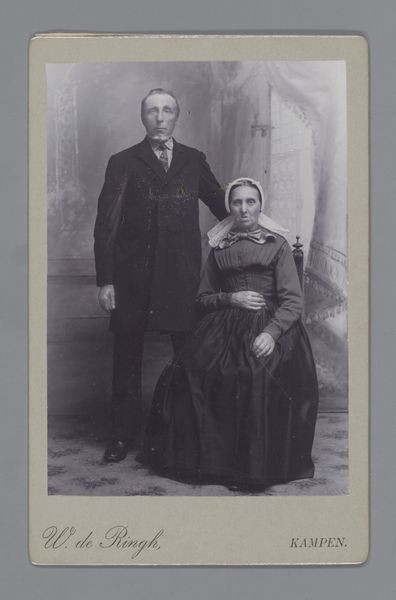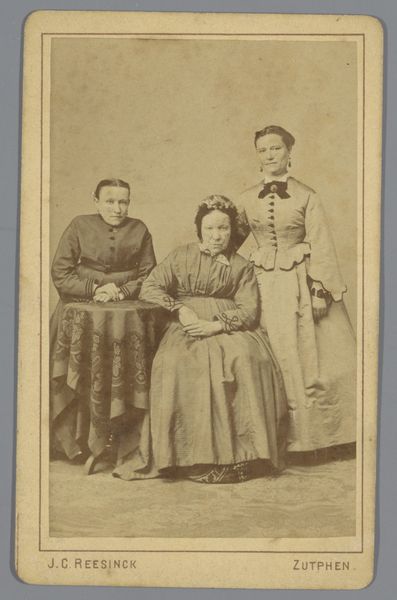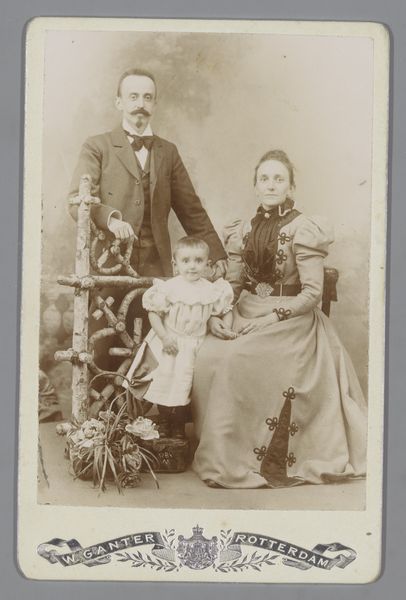
photography, gelatin-silver-print
#
photography
#
historical photography
#
historical fashion
#
group-portraits
#
gelatin-silver-print
#
19th century
#
genre-painting
Dimensions: height 166 mm, width 108 mm
Copyright: Rijks Museum: Open Domain
Curator: Looking at this gelatin-silver print, likely produced between 1890 and 1900, we see what’s titled, "Groepsportret van twee vrouwen en een man." It’s attributed to Pieter Duiker, a photographer working around that time. Editor: My first thought is how the almost uniform darkness of their attire contributes to a certain somber formality. You can almost feel the weight of expectation placed upon these photographic sittings, every piece of clothing, meticulously selected, becomes symbolic. Curator: Exactly! It’s a carefully constructed presentation. The dark clothing, particularly the women's mourning attire, signals status and respectability, in accordance with late 19th-century social norms and photographic conventions for portraiture. Editor: The stiffness of the poses also emphasizes this formality. But consider the photographer’s craft; working with gelatin-silver offered increased image sharpness and finer tonal range compared to earlier processes, even though its standardization shaped practices and access. Curator: A vital point. Duiker, placing himself as a commercial photographer of the Dutch late 19th century, operated within a structured system. Photography, by then, had moved beyond being solely an aristocratic pursuit to a commercially viable trade for a burgeoning middle class wanting to portray itself for posterity. Editor: Notice, too, the carefully arranged set. This neutral backdrop directs focus toward the material construction of selfhood displayed here. It seems they want to solidify the social roles as enduring testaments through their visual rendering. Curator: The very act of commissioning the photo reinforces their place in society. Portraiture democratized status to a degree, providing more opportunities for visibility—especially for the burgeoning middle classes looking to stake their claims within increasingly stratified social structures. Editor: And thinking about the consumption of photographs at that time—this gelatin-silver print would likely be displayed within the home. These pictures were physical manifestations of aspirations and social standing, their materiality reflecting both wealth and social desires. Curator: These carefully posed family images broadcast stability and success, crucial narratives given the dramatic shifts occurring at the end of the 19th century, solidifying the societal perceptions the trio seeks to attain and exemplify. Editor: Absolutely, examining the gelatin silver process, we’ve revealed more than meets the eye, reflecting a particular social dynamic of a specific time. Curator: Indeed, an examination beyond the image itself unveils broader understandings of societal construction and presentation.
Comments
No comments
Be the first to comment and join the conversation on the ultimate creative platform.
